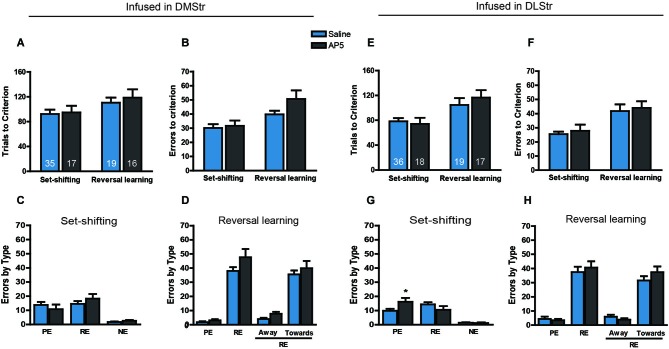Figure 4.
Effects of AP5 infused into dorsomedial striatum and dorsolateral striatum on behavioral flexibility. The behavioral procedure included three phases: cue learning, set-shifting, and reversal learning. Set-shifting and reversal learning were tested 24 and 48 h, respectively, after cue learning. Each rat was infused with 0.5 μg (0.5 μl) AP5 (dissolved in saline) per side before the test. The sample size in each group is shown in the corresponding column. (A) Number of trials and (B) number of errors to reach criterion in the set-shifting and reversal learning tasks following intra-DMStr infusions. (C,D) Analysis of the types of errors during set-shifting (C) and reversal learning (D) in rats that received AP5 treatment in the DMStr. (E) Number of trials and (F) number of errors to reach criterion in the set-shifting and reversal learning tasks following intra-DLStr infusions. (G,H) Analysis of the types of errors during set-shifting (G) and reversal learning (H) in rats that received AP5 treatment in the DLStr. * p < 0.05. PE, perseverative error; RE, regressive error; NE, non-reinforced error. During the reversal learning task, regressive errors were further divided into “away” and “toward” the visual cue.

